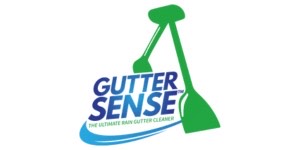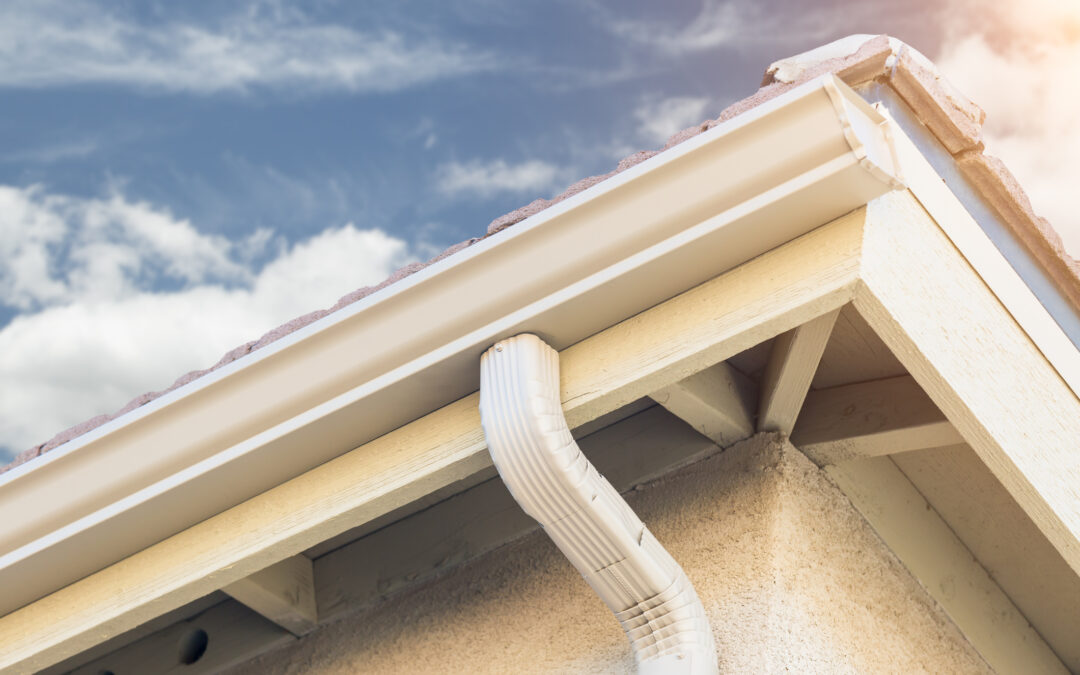Imagine it: it’s late in the afternoon on a hot, humid September day. The air is heavy. You hear the rumble of thunder, and soon the sky opens up with a torrential downpour. Rainwater cascades from the rooftops, pours from the downspouts, and drenches everything in its path.
This intense late-summer storm might be mesmerizing, but it also poses a danger to your home if your gutters aren’t ready to do their job. Gutters are really the silent protectors of our homes, safeguarding our foundations, basements, and landscaping from the threat of water damage. If you have ever overlooked the critical function of your gutters (and, we admit it, it’s easy to do), this article is for you. In it, we’ll go deep into why gutters are so vital to protecting your home—and share tips on how and when to clean them.
Why gutters are necessary
Your gutters have one very important job: to divert water away from your home. Why does this matter? Uncontrolled water flow can cause serious damage to your home. Rainwater that falls on a home without gutters—or with damaged or clogged gutters—has nowhere to go. The water pools around the house, seeping into the foundation and walls. This can cause cracks and basement flooding, allow mold to flourish, and even make the foundation unstable.
It’s not just the basement that needs protection. Gutters also guard your home’s exterior walls, windows, and doors from water damage. Water can damage these structures as well, causing wood to rot and paint to peel, and introducing mold growth. There are very real financial and health risks associated with this type of damage.
Finally, functioning gutters also protect your landscaping by preventing soil erosion and landscape damage caused by excessive water runoff. Without their help, water from nonexistent or overflowing gutters and downspouts will damage your trees and flower beds and carry away your mulch and topsoil.
Gutter protection in every season
Seasonal changes introduce new demands (and stresses) on your gutters. During rainy seasons like spring, summer, and fall, gutters manage the increased water volume, diverting it away from your home. When temperatures plunge in the late fall and winter, gutters help to manage snowmelt and channel it away from your home, preventing the formation of ice dams that can damage your roof and walls. Gutters also help to protect your home’s foundation during the cold season, preventing water from pooling around your home during winter rains or freeze-thaw cycles.
Alternatives to traditional gutters
Traditional gutters have long been the go-to solution to properly divert rainfall and snowmelt. In recent years, though, alternatives have emerged that offer different ways to manage water runoff. These include gutterless systems, rain chains, and rainwater harvesting systems.
Gutterless systems most often use a curved design that directs the flow of water away from a home without the need for traditional gutters. Rain chains add a touch of whimsy, guiding rain from the roof to the ground through a series of decorative cups connected by a chain. Rainwater harvesting systems enable homeowners to collect and store rainwater for watering gardens or landscaping. While each of these alternatives has a potential place in water management, they do not entirely replace the function of traditional gutters in effective water diversion. It’s why they are best incorporated as complementary to a traditional gutter system for your home.
How to clean the gutters safely
Now that you know why gutters are important, you might be wondering how to clean them. Gutter cleaning services can be pricey, with an average cost range for a two-story home from $100 to $325. For this reason, many homeowners choose the DIY approach, but this comes with risks.
Many gutter cleaning tools require you to use a ladder to clean the gutters. This increases the risk of ladder-related accidents, which kill more than 100 people annually and send thousands more to the emergency room.
Gutter cleaning tools like Gutter Sense can make gutter cleaning easier and safer. Gutter Sense is a lightweight, easy-to-use tool that attaches to a 12- to 20-foot extension pole. It eliminates the need to use a ladder, even for second-story gutters, so you can keep both feet on the ground when cleaning the gutters.
When to clean the gutters
In most areas of the country, the best time to clean your gutters is in the early spring. Choose a time after the ice on the roof and in the gutters has melted, but before buds and maple helicopters come down. This will help to ensure your gutters are ready for the spring rains.
Gutters should also be cleaned in the fall, after many of the leaves are down but before the first hard freeze. This will prepare your gutters to do their winter job.
While two times a year will suffice, you should always look for signs that your gutters are clogged, like water overflowing the tops of your gutters, or sagging gutters. And, if pine trees overhang your home, you will want to clean your gutters an additional time or two per year to keep up with the pine needle accumulation, which can also contribute to clogging.
Now you know once and for all why gutters are necessary. Regularly cleaning and maintaining your gutters will help to protect your investment in your home.
Looking for a way to make gutter cleaning easier? Be sure to check out Gutter Sense. At just $30, it’s a low-cost solution to easier, safer gutter cleaning. See it in action and purchase online.

